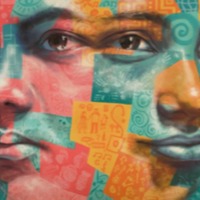
Sar
The Philippines has one of the largest migratory populations with their national economy largely depending on Overseas Filipino Worker's (OFW) remittances. The OFWs have been deemed the 'new heroes' of the Philippines' economy. However, some OFWs are subjected to exploitation throughout the Asia-Pacific, Europe, North America and the Middle East. Sar was lured abroad with promises of well-paid work, which she wanted to help pay for her grandmother’s hospitalisation. Instead, she had her passport and cell phone confiscated and was pressured to engage in sex work. Her account describes potential corruption of the immigration office, and problems with trying to reintegrate into her former community.
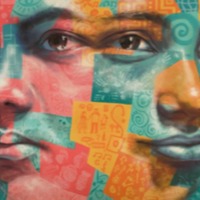
Annabel
In the Philippines, women and children are subjected to sexual exploitation in brothels, bars, and massage parlours, online, as well as in the production of pornography. The Philippines is an international hub for prostitution and commercial sex tourism – a highly profitable businesses for organised criminal syndicates. The demand for sex with children among both local and foreign men has continued to fuel child sex tourism. Rising internet usage rates, the availability of mobile phones and poverty has fostered online child sexual exploitation.
Annabel left school at 13 and began working various exploitative jobs, first in domestic service and then in a brothel, where she experienced a police raid. Instead of coming to her rescue, the effect of the police operation was to shame and stigmatize Annabel in her own community, making it harder for her to reintegrate or find other work. Annabel also discusses her future, and what changes she would like to see to prevent vulnerable people becoming enslaved.
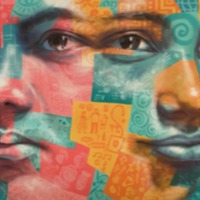
Sandeep
Sandeep was enslaved in a carpet loom in Uttar Pradesh. He was liberated by activists from Bal Vikas Ashram (BVA), an organization that liberates and rehabilitates child slaves. He was found weaving carpets, wearing only underwear, and had been forced to weave rugs for 12-15 hours a day, beginning at 6am. From BVA he received medical care, counseling, literacy training, and basic rights education.
More than 300,000 children are estimated to be trapped in India’s carpet industry in India, and there are also an estimated 500,000 children in the same industry in Pakistan. Most of India’s carpets are woven in Uttar Pradesh, where the majority of workers are low-caste Hindu boys. Some are lured into bondage by agents’ promises to their parents that they will receive good wages, and others are kidnapped. The boys are forced to work for no pay, for 10-18 hours a day, seven days a week. They are beaten, tortured, branded, kept half fed and half clad, and are usually made to sleep in the loom shed. Cuts and wounds are frequent.
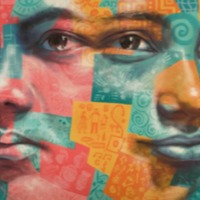
Maria A.
Born in Albania, "Maria" was trafficked into Italy, France, and the Netherlands. Closing the door on slavery seems almost impossible: “The shame for our parents and us is too large…what man will marry me?...It is difficult to smile.” Instead she reopens the door to her slave past and tries to help other trafficking victims—telling them that “they must make a new life” and inviting them to share their stories.
Many women are trafficked into richer Western European countries from the poorer Eastern countries, including Albania. The fall of communism in 1991 led to a rise in organized crime in Albania: in 2001 it was estimated 100,000 Albanian women and girls had been trafficked to Western European and other Balkan countries in the preceding ten years. More than 65 percent of Albanian sex-trafficking victims are minors at the time they are trafficked, and at least 50 percent of victims leave home under the false impression that they will be married or engaged to an Albanian or foreigner and live abroad. Another ten percent are kidnapped or forced into prostitution. The women and girls receive little or no pay for their work, and are commonly tortured if they do not comply.
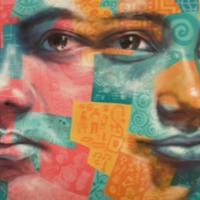
Manju
Manju was abducted and forced to work for a year as a child soldier in Sri Lanka at the age of 17, one of hundreds of thousands of children who participate in armies and armed groups in more than 30 countries around the world. The problem is most critical in Africa, where up to 100,000 children are estimated to be involved in armed conflict. Child soldiers also exist in Afghanistan, Burma, India, Indonesia, Iran, Iraq, Israel and the Occupied Palestinian Territories, though international law sets 18 as the minimum age for all participation in hostilities. In Sri Lanka, children as young as nine were abducted and used in combat by the Liberation Tigers of Tamil Eelam (LTTE) during its conflict with the Sri Lankan government, between 1983 and 2002. Children—most aged 14 or 15 and over 40 percent girls—were used for massed frontal attacks in major battles, and some between the ages of 12 and 14 were used to massacre women and children in rural villages. Others were used as human mine detectors, assassins and suicide bombers. A ceasefire was implemented in February 2002, this did not halt the LTTE’s use of child soldiers. Children were then more likely to be forcibly recruited: people saw no reason to give their children to the LTTE if they did not perceive themselves to be at risk from the government, and so the LTTE resorted to abduction. In 1994, one in 19 child recruits was abducted. By 2004, only one in 19 was a volunteer.
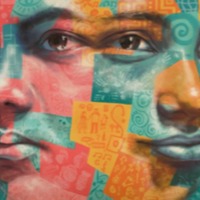
Kwasi
Kwasi spent three years in slavery on Lake Volta and was rescued in 2006 by the Association of People for Practical Life Education (APPLE), a small nonprofit organization that works directly with the fishermen and children.
Along Ghana’s Lake Volta, slave children work long hours mending, setting and pulling nets, cleaning and smoking fish, and rowing the fishing boats. Boys as young as six are forced to dive to disentangle nets caught on tree stumps below this large man-made lake. The fishermen tie weights to the children to help them descend more quickly. When the water is too cold or the children get caught in the nets below it is not uncommon to find bodies washed up on the shores. If sick or injured, the children receive no care or treatment. While most of the enslaved children are boys, some girls are used for domestic work and to sell the fish in the market. Like other trafficked girls in Ghana, they are likely to be sexually abused as well.
Lake Volta is one of the world’s largest lakes and used to be a source of fish for both the national and export markets. But in the 1960s a dam slowed the vigorous flow of water and destroyed the fishing potential of nearby communities. Facing a newly impoverished environment, some fishermen began to enslave children rather than pay adult workers. With schooling hard to obtain and family incomes around the starvation level, parents will sometimes agree to let their children go in order to gain an “advance” on their child’s labor. Normally, the fishermen promise that more money will be paid to the parents over the next year. The money never comes.
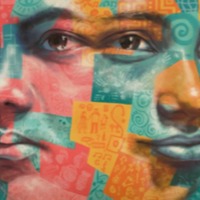
Jaroslava
Jaroslava is a Slovakian woman who travelled to the UK on the false promise of a job in a sandwich factory but instead enslaved in prostitution in London. She managed to escape to Glasgow and was put in touch with the Trafficking Awareness Raising Alliance (TARA), which has provided support to allow Jaroslava to establish a job and aspirations for the future. The majority of those trafficked to the UK have been identified victims of sexual exploitation, followed by adults exploited in the domestic service sector and other types of labour exploitation.
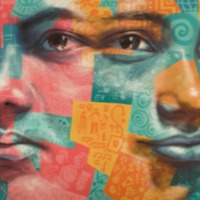
Flutura
Born in Albania, Flutura was trafficked into Italy, where trafficking victims also arrive from Nigeria, Romania, Bulgaria, China, and South America. One NGO estimates that 48 percent of the prostitutes in Italy are from Eastern Europe. Many women are trafficked into richer Western European countries from the poorer Eastern countries, including Albania. The fall of communism in 1991 led to a rise in organized crime in Albania: in 2001 it was estimated 100,000 Albanian women and girls had been trafficked to Western European and other Balkan countries in the preceding ten years. More than 65 percent of Albanian sex-trafficking victims are minors at the time they are trafficked, and at least 50 percent of victims leave home under the false impression that they will be married or engaged to an Albanian or foreigner and live abroad. Another ten percent are kidnapped or forced into prostitution. The women and girls receive little or no pay for their work, and are commonly tortured if they do not comply.
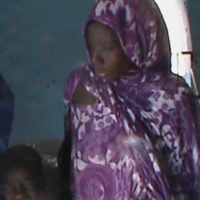
Fatimata
Mauritania is one of the last countries in the world where people are still born into hereditary slavery, which means they are literally owned by other people, and forced to work for masters their entire lives. People in slavery come from the Haratine ethnic group, historically enslaved by White Moors. They can be bought and sold, or given as gifts, and face a lifetime of exploitation and abuse. Rape of female slaves is common and their children also become slaves. They are Muslims, and many believe that it is Allah’s wish for them to be enslaved because they are told that their paradise is bound to their Master. In reality, Islam dictates that a Muslim cannot enslave a fellow Muslim. Since 2007 slavery has been criminalised in Mauritania but the law is not enforced and the government is reluctant to acknowledge the existence of the problem. With support from Anti-Slavery International, Fatimata’s master was convicted for slavery in a landmark case in May 2016.
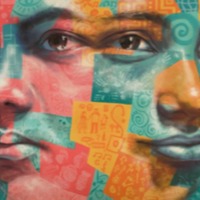
Dia
Dia was forced to join a guerilla group in Columbia for nine months at the age of 15, one of hundreds of thousands of children who participate in armies and armed groups in more than 30 countries around the world. The problem is most critical in Africa, where up to 100,000 children are estimated to be involved in armed conflict. Child soldiers also exist in Afghanistan, Burma, India, Indonesia, Iran, Iraq, Israel and the Occupied Palestinian Territories, though international law sets 18 as the minimum age for all participation in hostilities. Both sides engaged in Columbia’s 40-year-old conflict have used children: the government-backed paramilitary Autodefensas Unidas de Colombia, and the left-wing guerrilla groups Fuerzas Armadas Revolucionarias de Colombia (FARC) and Ejército de Liberación Nacional. Total estimates of the numbers of children fighting in paramilitaries and urban militias range from between 11,000 and 14,000. FARC has the largest number of minors, including several thousand under the age of 15. Women and girls constitute up to half of all recruits to the armed opposition groups and face pressure to enter relationships with male commanders. Children take part in combat, act as messengers, and lay explosives. Most are denied contact with their families.
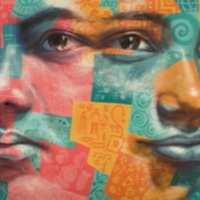
Denise
In the Philippines, where three major insurgent groups have fought the Philippine military since the 1960s, there are an estimated 2000 child soldiers. The Communist-oriented New People’s Army, established in 1968, began an intense recruitment of children in the 1990s. By 2000, some 25 percent of new recruits were children, and more than ten percent of its regular combatants are now under 18. Parents volunteer children to serve as combatants and camp guards. The Moro Islamic Liberation Front allows the training of children as young as 12. Parents volunteer their children, seeing it as an observation of Islamic teaching, and Muslim youth organizations recruit students from schools and colleges. The Abu Sayyaf (“Bearer of the Sword”), a Muslim separatist group which appeared in the late 1980s, uses Islamic religion to draw minors into the movement, for use as combatants, human shields, and hostages.Denise became a child soldier in the Philippines at the age of 16.